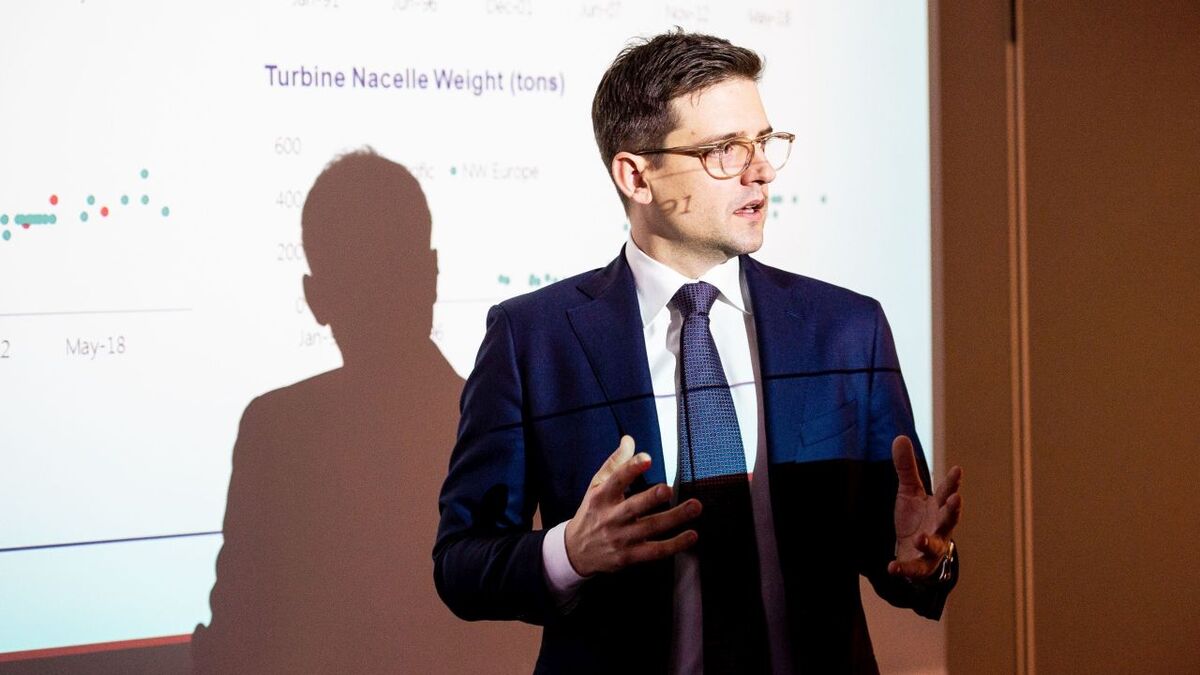The limited orderbook for foundation installation vessels and competition for existing vessels from the offshore oil and gas market could pose a major headache for offshore wind developers
Speaking at a special session of the 2022 Offshore Wind Journal Conference, which took place today (14 June 2022) in London, Clarksons Platou Securities head of research Turner Holm said although the market for turbine installation vessels may be under-supplied by mid-decade, the market for foundation installation vessels faces numerous challenges and could become even more of an issue for the market
The challenges facing the foundation installation segment include the fact that the market is evolving quickly, and foundations are growing in size and weight at the same time the offshore oil gas market is booming, drawing vessels away from offshore wind. Much foundation installation work in the offshore wind space is done by oil and gas vessels, but the offshore oil and gas market has improved dramatically, with the oil price currently above US$/barrel.
The key problem, as Mr Holm sees it, is there aren’t enough new-generation floating foundation installation vessels on order and, at the same time, the number of monopiles that are going to need to be installed in the next few years is growing rapidly.
Such is the fast pace of growth in the global offshore wind industry that production capacity at monopile manufacturers is expected to triple in the next three years alone. “The number and size of foundations is growing all the time, pressuring vessel supply,” Mr Holm told the conference, noting the monopile market is moving quickly in the direction of much heavier, larger-diameter units.
“Many vessels are ill-equipped to handle next-generation monopiles,” Mr Holm explained. “More than half of the fleet will struggle to handle massive new monopiles and jacket foundations. Demand will outpace supply in the later part of the decade. Even vessels ordered today won’t be ready for work until the 2026 timeframe, so owners need to act quickly.”
The trouble is, he explained, that new vessels are increasingly expensive to build, and the longer owners wait, the more expensive newbuilds will be.
Clarksons Platou Securities estimates build costs have increased by nearly 25% since 2019. Mr Holm said the cost of Chinese steel plate has risen significantly, and Clarksons newbuilding index has seen a steep increase since early 2021. Jan De Nul’s foundation installation vessel Les Alizés, ordered in November 2019 at a price Clarksons puts at US$275M would cost approximately US$340M now, Mr Holm said.
As highlighted above, the foundation installation vessels used in the offshore wind industry fall into two broad categories: heavy-lift vessels built for the offshore oil and gas industry; and purpose-built units for offshore wind work. The former tend to be expensive with high operating and capex costs and a high carbon footprint. Vessels operated by Heerema, Saipem, Seaway 7 and Sapura fall into this category.
In contrast, purpose-built offshore wind tonnage tends to have lower opex and capex, and lower CO2 emissions. Among this category are new vessels such as Jan De Nul’s Les Alizés, DEME’s Orion and Green Jade, Seaway 7’s Seaway Alfa Lift and Cadeler’s new F-class, the first example of which was ordered recently.
Demand for the older, less cost-effective, more polluting vessels is growing as the offshore oil and gas market recovers, whereas purpose-built vessels can reduce the levelised cost of energy in the offshore wind sector and are safer, more efficient and can work in more challenging weather conditions, Mr Holm told delegates. “They have superior carrying capacity so fewer trips are required to install the same number of foundations. They also have motion-compensated crane /or pile gripper systems allowing for installation of monopiles in DP mode,” he said.
As he also noted, historically many foundations have been installed by turbine installation vessels. “We account for this in our turbine installation vessel models, usually assuming that they install all turbines and around 25% of foundations,” he told OWJ. “Because of the growing size and weight of foundations – which are actually growing faster than turbines – there is a need for specialised floating foundation vessels. This is the most under-ordered segment in offshore wind and that view is becoming more common, hence Cadeler’s F-class order.”
Mr Holm said Clarksons Platou Securities ran two scenarios on the demand side, a 100% scenario in which all foundations are installed by foundation vessels, and a 75% scenario in which wind turbine installation vessels continue to install around 25% of foundations.
“Relative efficiency and availability are likely to be the deciding factors,” he explained. “For example Seaway 7’s Seaway Alfa Lift can carry up to 10 foundations and transition pieces per trip, whereas for a large wind turbine installation vessel the figure is more like six foundations, depending on their weight. It also takes time to jack-up and jack-down between foundation installation sites, which makes jack-ups less efficient compared with floating vessels with dynamic positioning.”
As Mr Holm also told OWJ, it is important to notice the difference in crane size in floating vessels compared with jack-ups because the physics of lifting from the vessels is quite different.
“Jack-ups with cranes of around 2,500 tonnes or more can install next-generation foundations, but the consensus, according to multiple sources, is that floating vessels need cranes of 5,000 tonnes capacity or more. That’s because jack-ups can lift greater loads at a greater radius because of the stability provided by their legs.”






